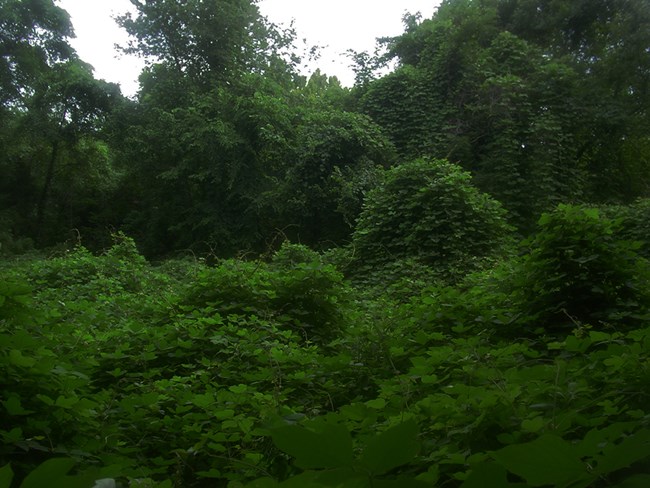
NPS-Photo
A weed is often defined as “a plant out of place.” Humans move plants around the world and beyond their natural homes for many reasons. These non-native plants may be valued as food, for their usefulness, or for their beauty. Some of these plants continue to depend on the direct care of humans for their survival. Others, however, will be able to survive and reproduce in their new home. Of these plants, a fraction will spread rapidly into and across national parks. A plant that spreads rapidly is known as “invasive.” While non-native plants that are invasive may be problematic plants, plants native to the U.S. can also spread rapidly and be problematic in national parks.
Park managers have the difficult job of deciding whether a plant might be a problem. To assist with this decision, biologists map the locations and estimate the amount of these plants in national parks. This information can be combined with risk information about the plant and knowledge about important park features. Park managers can then decide whether to try to control the plant. Success in controlling problematic plants is much greater when these plants are found before they have spread widely, making regular monitoring even more important.
Monitoring Questions and Approach
- Which problematic plants are found in parks?
- Where are problematic plants found in parks?
- Which problematic plants are uncommon and which are widespread in parks?
Reports and Protocols
Source: NPS DataStore Collection 4067. To search for additional information, visit the NPS DataStore.
Source: NPS DataStore Collection 4453. To search for additional information, visit the NPS DataStore.
Last updated: December 20, 2024
